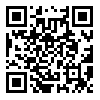目的 评价羟基脲治疗输血依赖型β⁃地中海贫血的有效性、安全性和经济性。方法 采用回顾性研究方法,纳入80例输血依赖型β⁃地贫患者作为研究对象。其中,羟基脲组(n=40)采用常规输血加用羟基脲治疗,常规治疗组(n=40)采用常规输血治疗,比较两组的疗效和安全性。构建Markov模型进行成本⁃效用分析,比较两组的经济性。结果 治疗后,羟基脲组的血红蛋白水平高于治疗前及常规治疗组(P<0.05),但两组的治疗总有效率、输血频次及输血量差异无统计学意义(P>0.05),且安全性相似。成本⁃效用分析结果显示,与常规治疗组相比,羟基脲组的人均增量成本为1 559.13元,人均增量效用为0.20质量调整生命年(QALY),增量效果比为7 522.47元/QALY,表明当意愿支付值超过7 522.4元时,羟基脲具有一定的成本⁃效用优势。概率敏感性分析显示成本⁃效用分析结果较为稳定。结论 对于输血依赖型β⁃地中海贫血患者,常规输血治疗加用羟基脲相较于常规治疗方案具有一定的临床优势和成本⁃效用优势。
广西医学 页码:578-584
作者机构:蒋慧娴,硕士,初级药师,研究方向为临床药学。
基金信息:自治区卫生健康委药品临床综合评价课题(YPPJ004);2022白求恩·求索-药学科研能力建设项目(Z04JKM2021005)
- 中文简介
- 英文简介
- 参考文献
Objective To evaluate the effectiveness, safety, and economy of hydroxyurea for the treatment of transfusion⁃dependent β⁃thalassemia. Methods A retrospective study was conducted involving 80 patients with transfusion⁃dependent β⁃thalassemia as the research subjects, therein the hydroxyurea group (40 cases) received conventional blood transfusion combined with hydroxyurea for treatment, while the conventional treatment group (40 cases) received conventional blood transfusion for treatment. The efficacy and safety were compared between patients of the two groups. A Markov model was constructed for cost⁃utility analysis, and economy was compared between the two groups. Results After treatment, the hemoglobin level in the hydroxyurea group was higher than that before treatment and in the conventional treatment group (P<0.05). However, no statistically significant difference was observed between the two groups in terms of total effective rate of treatment, transfusion frequency, transfusion volume (P>0.05), and safety was similar. The results of cost⁃utility analysis revealed that compared with the conventional treatment group, the hydroxyurea group had an incremental cost of 1559.13 RMB per patient and an incremental utility of 0.20 quality adjusted life year (QALY), resulting in an incremental cost effectiveness ratio of 7522.47 RMB/QALY. The results indicated that hydroxyurea demonstrated cost⁃utility advantage to a certain extent when the willingness⁃to⁃pay value exceeded 7522.4 RMB. Probabilistic sensitivity analysis confirmed the stability of the findings of cost⁃utility analysis. Conclusion For patients with transfusion⁃dependent β⁃thalassemia, the addition of hydroxyurea to conventional blood transfusion therapy offers clinical and cost⁃utility advantages compared with conventional treatment regimen to a certain extent.
-
无




 注册
注册 忘记密码
忘记密码 忘记用户名
忘记用户名 专家账号密码找回
专家账号密码找回 下载
下载 收藏
收藏
